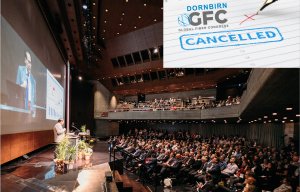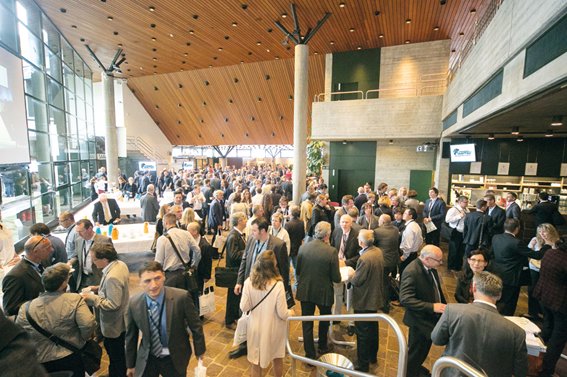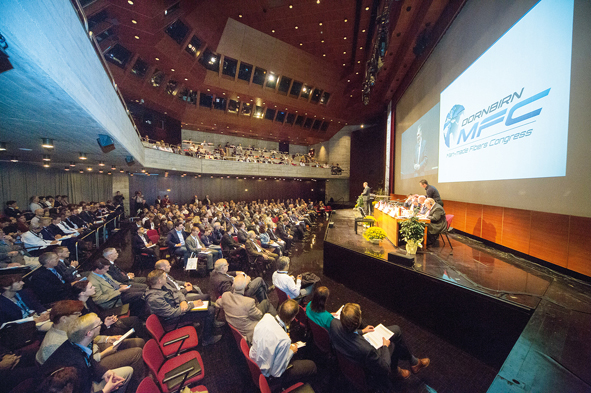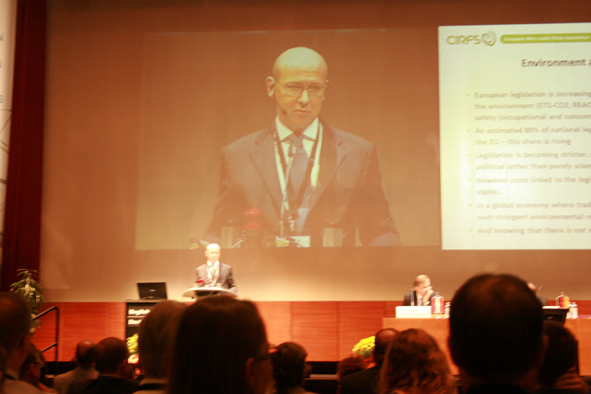
Dornbirn-GFC 2020 cancelled
Opinion


Despite over-capacity, China continues to invest in new polyester fibre manufacturing, which is resulting in poor profitability for manufacturers.

6th October 2016
Adrian Wilson
|
Dornbirn
Despite significant over-capacity, China continues to invest in new polyester fibre manufacturing, which is resulting in depressed prices and poor profitability for manufacturers globally, says Frédéric Van Houte, director general of CIRFS, the European Manmade Fibres Association.
Speaking at the opening of the recent Dornbirn Manmade Fibres Congress in Austria, he noted that many new polyester plant projects are decided without sufficient market research in China, where access to finance is easy and investments – operating costs such as energy, raw materials and labour, as well as exports – can all be subsidised at certain times.
Of the 95.9 million tons of all fibres produced globally in 2015, 68.8 million tons, or 72%, were manmade fibres (MMF) and China remains by far the biggest producer, with its output of 45.8 million tons representing 67% of all MMF last year.
Polyester, meanwhile, remains the dominant fibre, with the 51.6 million tons of it produced last year representing 75% of all MMF.
It is here that the problem lies, Van Houte said. The global capacity for polyester production in 2016 is now 70 million tons and only 71% of this is expected to be utilised. There is an estimated 21% overcapacity situation in China, compared to just 8% for the rest of the world.
Europe’s MMF industry is by contrast, very well balanced between fibre types, albeit only being 3.4 million tons in total in 2015. Of this, just 29% was polyester, with 24% being polypropylene, 16% cellulosics, 15% acrylics and 12% polyamide.
Europe, however, was heavily affected by the financial crisis from which it is still recovering.

“Recovery is underway but remains fragile,” said Van Houte. “The MMF industry is heavily influenced by developments in the economy and the financial crisis led to higher taxes, due to public debt, and bankruptcies, exacerbating unemployment. Many uncertainties exist, not least Brexit and growing anti-EU sentiment, as well as political instability in the Middle-East.”
On top of this are EU-specific environmental pressures and a manufacturing sector that is more heavily regulated than in other parts of the world.
“The MMF industry has to show that it meets all environmental requirements in terms of raw material use, energy, emissions, waste as well as employee and consumer health and EU legislation is becoming increasingly complex, but costs linked to the environment must remain acceptable for the industry to develop,” Van Houte said. “Impact assessments by the EU on new legislation are not always transparent and often guided by politics rather than science. Meeting EU legislation is costly and means less money is available for innovation and research and this is a competitive disadvantage in a global world, especially when imports entering the EU are insufficiently controlled for conformity with EU legislation.”
Nevertheless, he also sees advantages for European producers, especially in terms of innovation.

“Creativity and innovation are embedded in European culture and the flexibility of its MMF production units makes experimentation and small-scale product runs easier,” he said. “There is a willingness to invest in new developments backed by a unique network of universities, R&D centres and co-operation with machinery builders, and chemicals and raw materials companies downstream. The European authorities also help and support via funding.”
Existing polymers are being improved, he added, fibres are being modified for new applications and technical textiles are entering new markets by substituting for other materials.
“Sustainability is very important now, since any innovation, which does not somehow mean progress in preserving our planet will not be recognised as such. Trade associations like CIRFS exist to support all positive progress.”

Business intelligence for the fibre, textiles and apparel industries: technologies, innovations, markets, investments, trade policy, sourcing, strategy...
Find out more